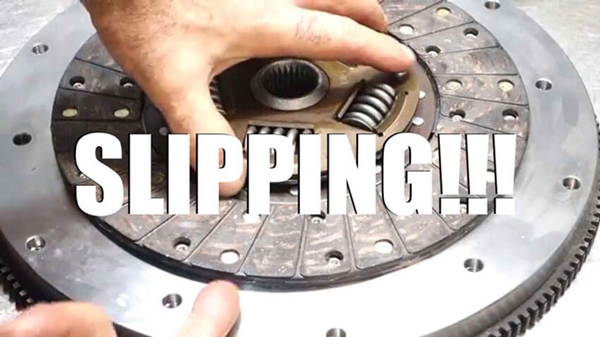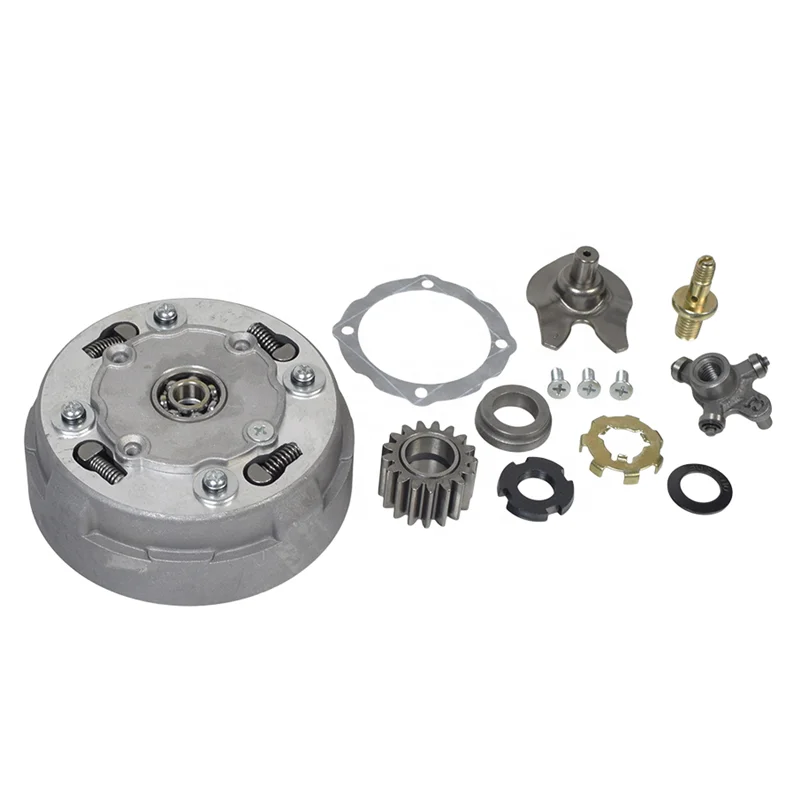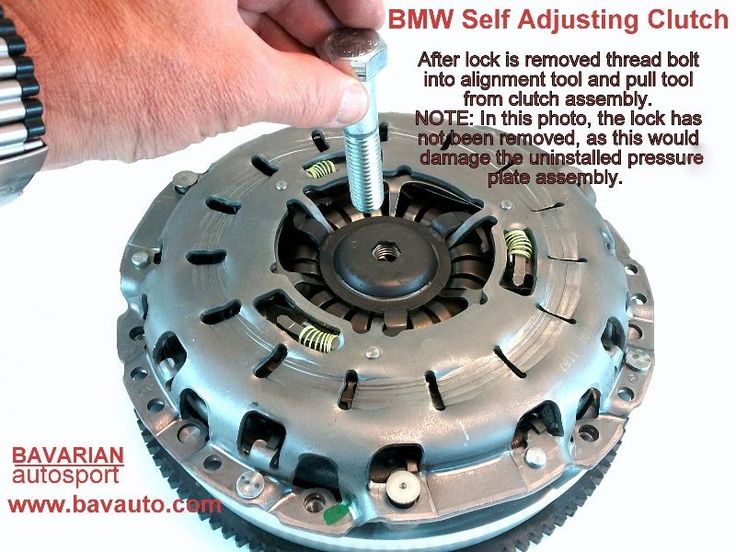Many riders don’t pay much attention to their ATV clutch. Don’t be that rider. Read this post to learn why quad clutch maintenance is important, and how to clean and protect your clutch.
Image from www.utvservice.com
Your ATV’s clutch system maintains smooth interaction between a constantly spinning ATV engine and the wheels, so your wheels only spin when you want them to. It’s easy to take them for granted or neglect clutch care. When everything is running well, you don’t think to check the clutch. It can also be hard to get to the clutch, and many off roaders don’t have the tools to do all that a clutch needs. Sadly, many clutches suffer because of this, and this is sad for you because if you neglect your clutch long enough, you can end up paying big money on repairs.
A dirty and worn 4 wheeler clutch will cause:
Repairing the clutches to fix these problems is not cheap.
Clutches seem protected by their clutch cases, but you’d be surprised how dirty they can get. That dirt interferes with the normal functions of the many moving parts inside a clutch. This can reduce your control over your machine or make it inoperable.
Where does the dirt come from?
Off-road will keep you dry and safe in water and mud
Find out the best look for you
Clutch maintenance should be a regular part of your ATV maintenance, but the exact method and intervals differ depending on your riding style.
Check your clutch for dirt and damage after every ride if you race your ATV or ride in swampy areas.
Check your clutch at an interval of about two weeks’ worth of riding in mud.
If you primarily ride on dry ground, you can wait until it’s time to change your oil to check your clutch.
Make sure:
If you can’t do the maintenance yourself, take your ATV to a shop so they can do it.
Make sure to read your owner’s manual or repair manual for the exact steps for your vehicle model.
General steps include:
Removing the tire to access the clutch case.
Removing all the screws from the clutch case.
Using a clutch remover tool on the secondary clutch to loosen it.
Noticing the direction of the belt and removing it.
Spraying both clutches with an air gun to remove loose dirt.
Using brake cleaner for more stubborn dirt, and making sure to let it dry thoroughly.
Wiping the sheaves on both clutches with a towel.
Checking for scratches or grooves in the clutches.
Checking the belt for wear and damage and replacing if necessary.
Reinstalling a new belt in the direction of the arrows on the belt and the same belt in whichever direction it was previously on.
There are many ways you can protect your clutch so it stays in better shape longer.
Heavy duty belts are less likely to slip and last much longer than OEM belts. Do this if you are confident that you can purchase a good aftermarket belt. Otherwise, leave it be and maintain good belt maintenance.
If you ride in a lot of mud or water, snorkel your ATV to keep junk out of your clutch case.
Your clutch may currently have square slide blocks or rollers. If you have square slide blocks, consider switching to heavy-duty rollers. These will cause less friction and stand up to pressure longer. But don’t neglect them just because they last a long time. They’re not indestructible.
These will cause less friction and stand up to pressure longer. But don’t neglect them just because they last a long time. They’re not indestructible.
When you have a belt on hand, you can replace one that is damaged rather than keep riding until you get back to the trailer.
Also make sure whenever you install a belt that you don’t tighten it too tightly or force it into shapes it doesn’t want to go in.
Some riders always ride in high gear. This isn’t necessary, and it wears out your vehicle super fast. Ride in low gear when you’re riding under 20 mph for prolonged periods, pulling a load and riding at low speeds, and at higher elevation. Be particularly mindful of this advice if you have an engine below 700cc.
When you put the clutch case back on, make sure you get the seal back in place. Otherwise water will collect in the case.
HIT
ENDURO LIGHT Graphite
the most durable
458 EUR
HIT
ENDURO Camogrey
the most durable
657 EUR
ENDURO Graphite
the most durable
279 EUR
HIT
ENDURO Graphite
the most durable
657 EUR
-28%
AQUAMASTER-ZIP LIGHT Camogrey
with central zipper
598 EUR
430. 40 EUR
40 EUR
HIT
ENDURO LIGHT Camogrey
the most durable
458 EUR
-12%
AQUAMASTER LIGHT Red
reliability & comfort
438 EUR
386.20 EUR
NEODRY Black
17 EUR
11.90 EUR
ENDURO Camogrey
the most durable
279 EUR
AQUAMASTER Blue
reliability & comfort
647 EUR
-20%
HIT
AQUAMASTER Red
reliability & comfort
259 EUR
207.20 EUR
-40%
HIT
AQUAMASTER Orange
reliability & comfort
259 EUR
155.40 EUR
AQUAMASTER Red
reliability & comfort
677 EUR
BELT
9 EUR
ENDURO BF Camogrey
bootfoot waders
528 EUR
ALL SEASON Black
69 EUR
ENDURO BF Camogrey
bootfoot waders
329 EUR
MUDWAY Graphite
179 EUR
MUDWAY Camogrey
179 EUR
NEOSENSOR Camoarmy
12 EUR
8. 40 EUR
40 EUR
Explore all
The clutch system in your ATV is the main connection between your vehicle and the wheels’ controls. It’s an important constituent of the overall transmission system that doesn’t get much attention when everything works well. How does a clutch work?
An ATV clutch works by ensuring stability in the power generated from the ATV engine to work with a transmission. The mode of operation in a clutch will vary depending on whether it is a sheave clutch or a centrifugal clutch. It can also use a multi-plate clutch design.
The rest of the article will look at the different types of clutches you may find in an ATV and how they work.
A clutch is an integral unit in any vehicle’s power transmission, and an ATV is no different. When your ATV is on, the engine spins all the time, but the wheels do not.
The clutch ensures smooth engagement between the spinning engine and the transmission, ensuring that there’s no slippage between them.
There are three main types of clutch you can find in any ATV model today. They are the sheave clutch, centrifugal clutch, and multi-plate clutch.
These clutches are mostly used in ATV models fitted with automatic CVT (continuously variable transmissions) systems. They are built to ensure the engine is constantly running at the best RPM needed to generate the highest power possible at any speed level.
This system consists of a primary and secondary clutch. These are also known as the drive/driven clutch.
The ATV engine’s crankshaft is linked to the primary clutch, which is joined to the secondary clutch through the drive belt. Finally, the ATV’s secondary clutch is linked to its transmission.
The primary and secondary clutches have movable and stationary sheaves where the drive belt fits.
The moveable sheave is fitted with a spring for compression and some flyweights. The weights are useful because they help the stationary and movable sheaves to maintain an appropriate distance.
The weights are useful because they help the stationary and movable sheaves to maintain an appropriate distance.
When your engine is running and the driveshaft spins, centrifugal sources move the flyweights and the stationary and movable sheaves around to force a gear change and deliver higher speeds when you need it.
Here’s a video showing the install of a sheave clutch:
The centrifugal ATV clutch gets its name from the fact that it relies on the centrifugal force generated while it is rotating to activate or deactivate the clutch system.
Different manufacturers have different designs and layouts for centrifugal clutches, but the operation mode is similar across the board.
The ATV engine’s crankshaft is hooked to the central or main drive shaft inside the clutch system. While the crankshaft rotates, the drive shaft spins with it. The entire clutch system is contained inside an external clutch drum linked to the ATV transmission.
A collection of springs linked to the ATV drive shaft nestles between the outer or exterior clutch drum and the central drive shaft. Some clutch shoes (weighted) are affixed to the other extreme of the springs.
These shoes don’t interact with the clutch drum’s inner side due to the tension delivered by the springs.
The ATV’s drive shaft spins both the shoes and the springs as the crankshaft spins. With an increase in the speed of rotation, the shoes’ centrifugal force also increases. The force pushes the shoes outward, so they can come in contact with the clutch drum’s inner face and bind against it.
As soon as the shoes come in contact with the ATV clutch drum, the drum will spin, providing drive or power from the ATV engine into the transmission and the rear wheels.
Here’s a video showing how a centrifugal clutch works:
A multi-plate clutch is a popular option found in many ATV models. It receives power from an engine and channels it to the input shaft of the transmission. From here, the power moves to the rear wheels through the gearbox.
The crankshaft coming from the ATV engine is linked to a drive gear joined to the outer clutch basket. The clutch basket rotates as the crankshaft spins. Inside the outer basket, a clutch boss (a smaller inner basket) is linked to the ATV transmission.
A set of friction clutch plates (also known as clutch discs) separate the inner and outer baskets. A section of the plates is joined to the outer basket while some drive clutch plates hook up to the inner clutch basket.
A section of the plates is joined to the outer basket while some drive clutch plates hook up to the inner clutch basket.
The clutch plates are protected from the top by a set of springs and the pressure plate. The pressure plate is designed to hold down the clutch plates to ensure the friction plates are bound tightly to the drive plates for a clean lock.
As the crankshaft rotates the outer basket connected to it, the tightly locked clutch plates trigger rotation in the inner basket as well. The result is rotation in the ATV transmission input shaft, which drives the ATV’s gearbox and rear wheels.
Here’s a video showing the operation of a multi-plate clutch:
We’ve seen a peek into what happens under the hood with the main types of ATV clutches. The convoluted nature of the systems means that your clutch needs regular maintenance.
The convoluted nature of the systems means that your clutch needs regular maintenance.
If you take your ATV to a maintenance shop, you’ll likely get clutch maintenance by default. However, if you’re doing the job on your own, there are a few things you should know:
Here are some things to watch out for when inspecting your ATV clutch:

These are some of the major maintenance tips to keep in mind for your ATV’s clutch. If you don’t ensure regular maintenance for the vehicle, there is a high possibility that it will develop any of the common problems associated with ATV clutches.
These include clutch slipping, clutch creeping and the attendant pungent smell, and a jerky feel in the lever. Repair these problems will cost more than maintenance in most cases, so give the clutch the desired attention.
Don’t forget to practice sensible clutch use while out riding to reduce the chances of damage. Don’t use your clutch as an aid for braking, and don’t leave your foot on it half the time.
Basically, any scenario that doesn’t make sense with your standard car or motorcycle clutch should be avoided with your ATV as well.
The clutch operation in an ATV is a very elaborate process regardless of the ATV clutch type in your model.
Understanding how each type of clutch works makes it easier for you to deliver regular maintenance if you have the DIY skills. If you don’t have the skill to handle the maintenance, outsource it to avoid more serious damage.
Sharing is caring!
The ATV clutch is responsible for both gear shifting and vibration reduction during the ride. ATVs for children are no exception.
As a rule, the occurrence of any problems with this component of motor vehicles, the rider feels immediately. It is recommended to service the ATV clutch every 6000-7000 km, but sometimes all kinds of problems can occur earlier. The rate of wear of the functional components of motor vehicles directly depends on the conditions of its operation.
The following points can serve as a signal that something is wrong with the motorbike clutch:
Depending on the severity of the failure, the problems described above can be solved either by repairing the vehicle's clutch or by replacing it completely. As for Chinese models of ATVs, here it is necessary to check whether the nuts on the clutch are securely fastened. Poor assembly of motorcycles can also cause suspicious sounds in the variator area.
To change the clutch on a children's ATV with your own hands, you will need:

In general, this procedure is quite simple and fast. In older models of ATVs, everything is somewhat more complicated. Before proceeding with the dismantling of any components of motor vehicles, be sure to read the instructions from the manufacturer.
Even in Chinese models of ATVs, the clutch boasts an impressive margin of safety, and therefore its breakdown often occurs as a result of improper use of this equipment.
The main causes of premature ATV clutch wear include:
The only way to prolong the life of your ATV clutch is to use it properly and carefully. It is advisable to use good oil, and do not forget about timely maintenance.
The use of high-quality clutch discs in the ATV ensures a smooth start of the vehicle, and also fully ensures reliable grip without slipping even under fairly high loads. The exception is children's electric ATVs, in which there is simply no clutch disc.
The exception is children's electric ATVs, in which there is simply no clutch disc.
ATV clutch usually needs to be adjusted no more than once a year. Before starting work, place the vehicle on a special footboard.
The process of adjusting the clutch on a motorbike is quite simple, and consists of the following steps:
 If it operates too slowly or too quickly, adjust the screw in the desired direction (tighten or loosen).
If it operates too slowly or too quickly, adjust the screw in the desired direction (tighten or loosen). Since adjusting your ATV's clutch is easy, you can repeat this procedure as needed. In the vast majority of motorcycle models, this functional component is adjusted in a similar way. If there are certain nuances in the clutch setting, they are explained in detail in the official vehicle manual.
05/29/2021 4458
The ATV clutch is responsible for shifting gears, as well as damping vibrations while riding. But if the element is worn out, the rider will face a number of problems: jerking, slipping, etc. In this case, the component will have to be changed. Therefore, let's figure out how to replace the clutch and when to do it.
The movement of the ATV is directly dependent on the health of the clutch. And even if you were able to buy a quality ATV, it is recommended to check this unit every 6-7 thousand km. But improper operation of equipment or overloading can “kill” the mechanism even earlier. If the device is out of order, you will notice that:
But improper operation of equipment or overloading can “kill” the mechanism even earlier. If the device is out of order, you will notice that:
All these problems can be solved by repairing or replacing the ATV clutch.
Note: Please note that the assembly of many Chinese ATVs leaves much to be desired. Therefore, after buying a quadric, you should check how the clutch is installed. If the nut on the mechanism is not fully tightened, you will hear a rumble in the CVT area while driving.
How to remove and install a new clutch on a child ATV depends on the model. For example, on some models, the chain reducer is covered with plastic parts (footboard, etc. ). In this case, the master needs to dismantle all interfering elements.
). In this case, the master needs to dismantle all interfering elements.
To replace the clutch you need:
The procedure is quite simple, but the design features of the ATV can make it a little more difficult. For example, in order to remove the mechanism from a teenage all-terrain vehicle, you need to dismantle the gearbox cover, unscrew a few screws, unscrew the nut, remove the washer and remove the clamp. Before changing the clutch on an ATV, study the documentation for the device.
It should be said right away that replacing the clutch on an ATV with a CVT is a little different from servicing children's or teenage vehicles.